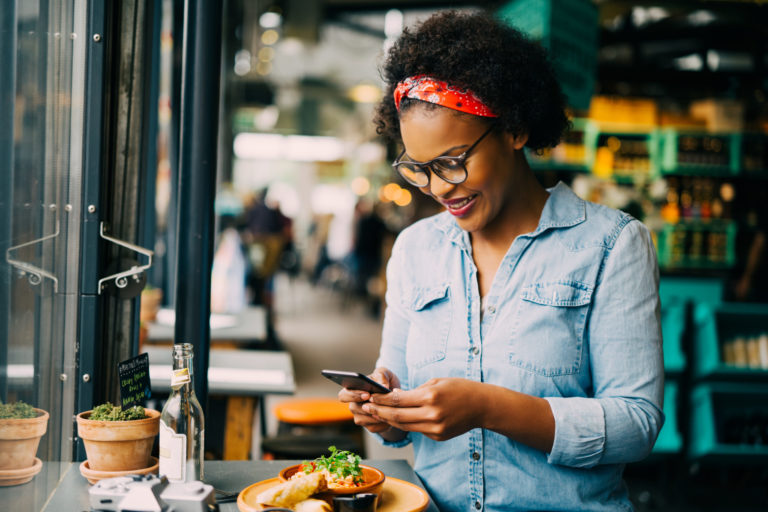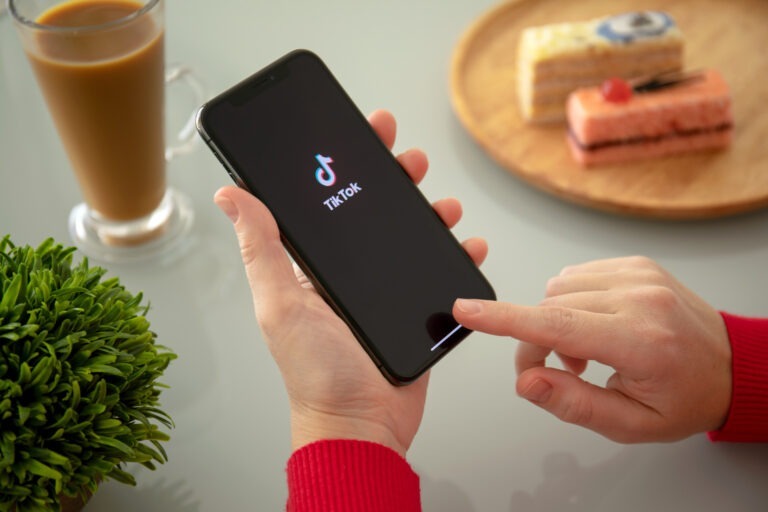How to Step Up Your Restaurant’s Social Media Marketing Strategy with Paid Ads
Sevenrooms
5 min read
May 5, 2023

Sevenrooms
5 min read
May 5, 2023

Social media is a powerful restaurant marketing channel — but it’s a crowded space. Nine out of ten businesses have social media accounts, so the competition is fierce. Having a social media presence is no longer the exception, and an organic strategy isn’t enough.
While there’s a lot of merit in cultivating a robust online presence with organic social media posts, turning to paid advertising can help you expand your restaurant’s reach, capture new business and set yourself apart from the competition.
Keep reading to learn how paid ads can be the difference between a good restaurant social media marketing strategy and a great one.
What we’ll cover:
45% of people have tried a new restaurant because of what they’ve seen on social platforms, so exploring all your options is imperative.
If you’re hesitant about spending money on paid social advertising for your restaurant, doing a deep dive into the tangible benefits of incorporating paid ads into your marketing strategy can help give you peace of mind (and hopefully make taking the plunge easier).
Pro Tip: Adding paid ads to your marketing plan doesn’t mean you should neglect your organic online presence. In fact, if you’re focusing on driving business with paid ads, it’s essential to step up the “wow factor” when it comes to your overall social media profiles. If people like what they see in your paid ads, they’ll want to explore, follow you and hopefully book a table.
Understanding your restaurant’s customer demographics helps you provide a better dining experience — and this knowledge also allows you to market your business more effectively and precisely.
When you use paid social media ads, you can hone in on the people who are most likely to visit your business (and avoid wasting your marketing dollars on people who won’t) by utilizing the range of demographic parameters these platforms offer.
Jared Nozick, Chief Marketing Officer for VERSUS in Washington, DC, told us that running paid digital ads has been a powerful way for their venues to reach a wider audience and increase visibility in a crowded marketplace.
“Our paid social advertising efforts have allowed us to better segment our audience and target specific ads to various demographics and locations based on data. Through this strategy, we are able to drive traffic to our venues through a targeted approach that allows us to reach more people, go niche with our campaigns and serve ads to customers that we know they want to see (and will engage with).”
Running paid ads unlocks a host of valuable data and analytics that can help you gauge the effectiveness (read: profitability) of your campaign. Sure, these ads cost money, but you can break down the metrics on each platform and take the guesswork out of ROI.
FYI: To start, allocate between $300 and $500 a month on social media ads. This range will allow your ad to reach enough potential customers to make the investment worth it, without incurring a huge financial risk for your business. Most restaurants dedicate 3%-6% of their revenue to marketing, but according to a study from Toast, 33% of restaurants don’t pay for social media ads. This leaves plenty of opportunities to engage new customers with a paid strategy.
The more eyeballs on a social media strategy, the better. While organic marketing can be an effective way to retain business, it’s not as well suited for attracting new customers because it only reaches people who already follow your business. Paid ads have a greater reach because they’re shown to people who don’t necessarily follow your accounts, but who data shows are likely interested in your business.
Below is an example of Versus Hospitality’s, Ciel Social Club, promoting a sponsored ad on Instagram to expand its reach.

At the end of the day, you want your paid ads to result in more people dining in your restaurant and ordering your food. Consider implementing a posting strategy based on holidays and busy dining occasions. This national food calendar highlights key takeout and delivery dates that can inform when to run ads that leverage off-premise ordering opportunities.
No matter when you decide to post, remember to include a direct link to your reservation widget or online ordering system to maximize your restaurant marketing ROI. You’ll make more money and save on fees by leveraging direct reservation links instead of third-party links.
Now that you know some of the key benefits of paid social media, we’re going to break down how the major social media channels present distinct advertising opportunities. Recognizing the differences between each platform can help you determine how to best allocate your marketing budget and efforts.
If you think Facebook is an outdated marketing channel, think again. With approximately 3 billion active monthly users, this social media giant is still going strong. Not only does this platform have popularity on its side, but Facebook business extensions allow you to acquire more guests and boost revenue.
Once you launch a Facebook ad campaign, there are several metrics you should monitor:
Facebook ads allow you to take an extremely narrow advertising approach since it offers many demographic and audience-specific features. Facebook allows guests to click on a direct booking link, so make it a goal to track and increase reservations on this platform by harnessing repeat business or enticing new customers to try your fare.
Facebook allows you to choose from several different ad formats including:
Once you decide what type of ad you’d like to launch, you can choose your target audience and of course, your budget. Facebook ad pricing is somewhat complex and is based on an auction structure. This means you’ll set a budget (either daily or lifetime) and then pay for the actions you want (impressions, conversions, etc.).

Blog
Learn More
When people think about restaurant-centric social media content, they often envision a perfectly-plated, mouth-watering Instagram post — you know, that quick-snap photo showcasing a sun-yellow egg yolk, in mid-drip, as it drapes over a tender, juicy hamburger patty. *Wipes drool from side of mouth*
Instagram ads are meant to play with the senses. With plenty of features that increase awareness and drive reservations, using paid ads will make your content more than just “instagrammable.”
When you create an ad campaign on your Instagram account, you should track the following metrics:
Like Facebook ads, Instagram ads provide an excellent opportunity to increase bookings by having the ad’s CTA include a direct booking link. Your Instagram ads can also work to increase brand awareness, help guests engage with your brand and create buzz about new items. A well-timed ad positioned in-feed can be just what a person needs to make your venue part of their weekend plans.
Instagram offers several paid ad options such as:
Instagram’s pricing format allows you to set both a budget and timeframe, and then Instagram will spend your budget evenly across the designated period.
Pro Tip: Whether you’re posting a regular post or a paid ad, it’s important to stay organized and consistent. Using an Instagram template, scheduling your posts in advance, and documenting the success rates of each post are all savvy strategies.
TikTok isn’t just for viral trends, hashtags and videos — it’s also an incredibly important tool that restaurants can leverage to bolster business. The platform attracts 1 billion monthly users, and since it’s widely popular among the younger crowd (67% of Americans under the age of 19 and 56% of Americans aged 20 to 29 use TikTok), amping up your TikTok marketing with paid ads is a great way to get people through your doors.
As you plot out your TikTok ad strategy, keep these key terms and metrics in mind:
Paying for TikTok ads can help you increase brand awareness and gain a fanbase. User-generated content is extremely important on this platform, and increasing your TikTok presence can also help your restaurant brand find collaborations with influencers and brand ambassadors. TikTok allows users to click on an ad that redirects to a landing page, so you can drive traffic to your website or reservation widget.
TikTok offers several ad formats including:

Blog
Learn More
Omnichannel marketing, which focuses on creating a consistent brand experience across multiple platforms, is quickly becoming the way of the future for restaurants — and paid ads are an invaluable tool you can use to bolster your restaurant’s omnichannel strategy. They can help expand your reach, boost your following, create cohesion and ultimately result in more patrons dining in your restaurant.
Leverage your paid ads to direct customers to a reservation system that doesn’t charge a cover fee, like SevenRooms, which will save you money and make you money in the long-run. Even though they’re just one piece of the puzzle, allocating funds towards paid ads can help make other elements of your marketing strategy (like your organic reach) stronger.
To cast the widest net, it’s best for restaurants to advertise on all social media platforms, includingFacebook, Instagram, TikTok and Google. Advertising on social media can help you entice younger customers, and putting search engines to work means you can meet your guests wherever they are on the internet.
Most restaurants allocate about 3%-6% of their revenue to marketing. After you determine your overall marketing budget, you can see how much you can afford to spend on ads.
Consistency is key, so you should aim to post at least a few times a week, with paid ads strategically integrated into your content calendar as holidays and special events dictate.